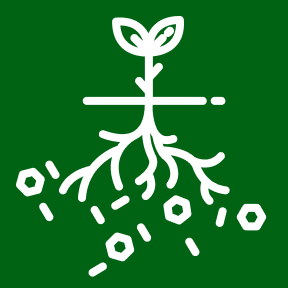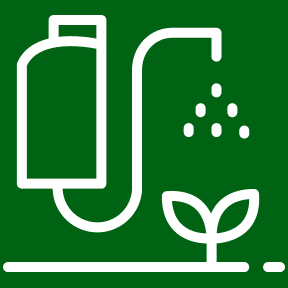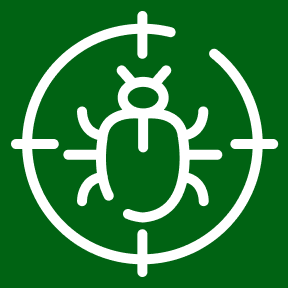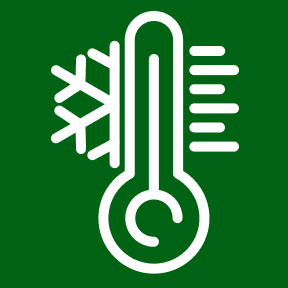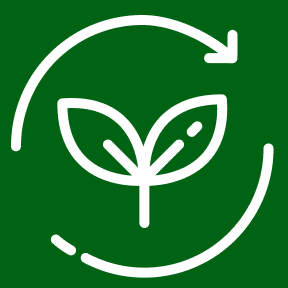Overview of Copper
Copper (Cu) is a vital micronutrient for all living organisms, including plants, where it serves as a cofactor for various enzymes involved in respiration and electron transport. At higher concentrations, copper functions as a broad-spectrum biocide. It exerts its antimicrobial effects by interacting with nucleic acids, disrupting enzyme active sites, interfering with energy transport systems, and compromising cell membrane integrity (Lamichhane et al., 2018). Various inorganic copper formulations have been developed and are used as biocides to control plant pathogenic bacteria, fungi, and oomycetes.
While copper compounds have revolutionized crop protection, their continuous and frequent use has also raised concerns about the long-term sustainability of crop protection. This is due to the impact of Cu-based compounds that may affect constituents such as soil fertility and groundwater due to their intensive use leading to Cu-accumulation over time (Lamichhane et al., 2018). Furthermore, the application of copper-based products such as copper sulphate and copper nitrate or spraying high acidic solutions (pH below 5.5) can result in phytotoxicity (Behlau et al. 2017). Due to the many constraints of different Cu-based formulations, the use of less soluble types of Cu, such as copper hydroxide and copper oxychloride, is encouraged.
The Fungal Enemy of Avocado
The use of fungicides to aid in the control of some diseases on various crops are inevitable. Avocado fruit spot (known as Cercospora spot) is a fungal disease caused primarily by Pseudocercospora purpurea. It is one of the most serious pre-harvest diseases of avocados in South Africa, causing losses of up to 70% in untreated orchards (Schoeman & Kallideen, 2014). Cercospora spot is commonly found in avocado-producing regions where warm, humid, and rainy conditions persist. Infection can occur on leaves, stems, and fruit at any time during the growing season (Schaffer et al., 2013). Due to the lesions it causes on the fruits, this pathogen has detrimental impacts from a quality perspective.
Factors that affect the severity of Cercospora include:
- Environmental factors: Linked to humidity, rainfall, and temperature (Darvas & Kotze, 1987).
- High-risk periods: The availability of conidia, along with weather conditions that favour infection (Boshoff et al., 1996).
- Latent period: The time interval that must pass between infection and the appearance of symptoms (Boshoff et al., 1996).
Various management practices are recommended for the effective control of Cercospora spot, with chemical control being one of the main management strategies. The disease can be effectively managed through timely applications of fungicides. The most common chemical control is copper oxychloride, although there are other registered fungicides for use against Cercospora spot (Kallideen, 2020).
Introducing: COPRWET™ Duo
COPRWET™ is a suspension concentrate contact fungicide containing 300g/L copper oxychloride (CuOCl) as an active ingredient. Copper oxychloride slowly releases copper ions, which are toxic to fungi and bacteria. The copper ions disrupt essential cellular processes in pathogens, inhibiting spore germination and fungal growth. It acts on the surface of plants, preventing infection rather than curing existing diseases.
COPRWET™ Key Features:
- Contains 40% – 60% less copper but still provides the same efficacy as other copper products.
- Flowable formulation
- Contains 41.25% of our superior patented OROWET® Technology – no need to add any other adjuvant.
- OROWET® Technology provides an optimal protective film and ensures:
- Optimal adherence to plant surfaces
- Excellent cover
- A reservoir of copper ions
- Controlled release of copper ions over time
- Protective and multi-site action
COPRWET™ vs Cercospora Spot on Avocado
In trials conducted in various avocado production areas of South Africa (Tzaneen, Magoebaskloof and Witrivier) an average control for two rates of COPRWET™ (300 mL/100L and 400 mL/100L) resulted in 91% and 92% clean fruit, respectively. These two treatments provided a similar result in comparison to an industry-standard product, with the difference being that COPRWET™ contains less copper.
From these results and based on the discussion regarding the use of Cu-based fungicides and their position in long-term crop protection, it is clear that effective management strategies, such as applying a copper-based fungicide that contains less actual copper but still provides optimal protection, play an integral part in the management of Cercospora spot on avocado.
In short, COPRWET™ plays an integral part in the management of Cercospora spot by providing effective control while preventing the build-up of high concentrations of copper in orchards.
References
Behlau F., Scandelai L.H.M., da Silva Junior G.J. & Lanza F.E. 2017. Soluble and insoluble copper formulations and metallic copper rate for control of citrus canker on sweet orange trees. Crop Protection 94:185–191. Available from: https://doi.org/10.1016/j.cropro.2017.01.003
Boshoff M., Kotzé, J.M. and Korsten, L. 1996. Effect of staggered copper sprays on pre- and post-harvest diseases of avocado in the KwaZulu-Natal Midlands. South African Avocado Growers’ Association, Yearbook 9: 49-51.
Darvas, J.M., and Kotzé, J.M. 1987. Avocado fruit diseases and their control in South Africa. South African Avocado Growers’ Association, Yearbook 10:117-119.
Kallideen, R. 2020. A relook at the epidemiology of Cercospora Spot on Avocado in South Africa. University of KwaZulu-Natal. (Dissertation-MSc).
Lamichhane, J.R., Osdaghi, E., Behlau, F., Köhl, J., Jones, J.B. & Aubertot, J.N. 2018. Thirteen decades of antimicrobial copper compounds applied in agriculture. A review. Agronomy for Sustainable Development 38(28). Available from: https://doi.org/10.1007/s13593-018-0503-9
Schoeman, M.H. & kallideen, R. 2018. Cercospora spot on avocado – A preliminary report on the relook at the epidemiology of the pathogen. South African Avocado Growers’ Association, Yearbook 41:86-91.







